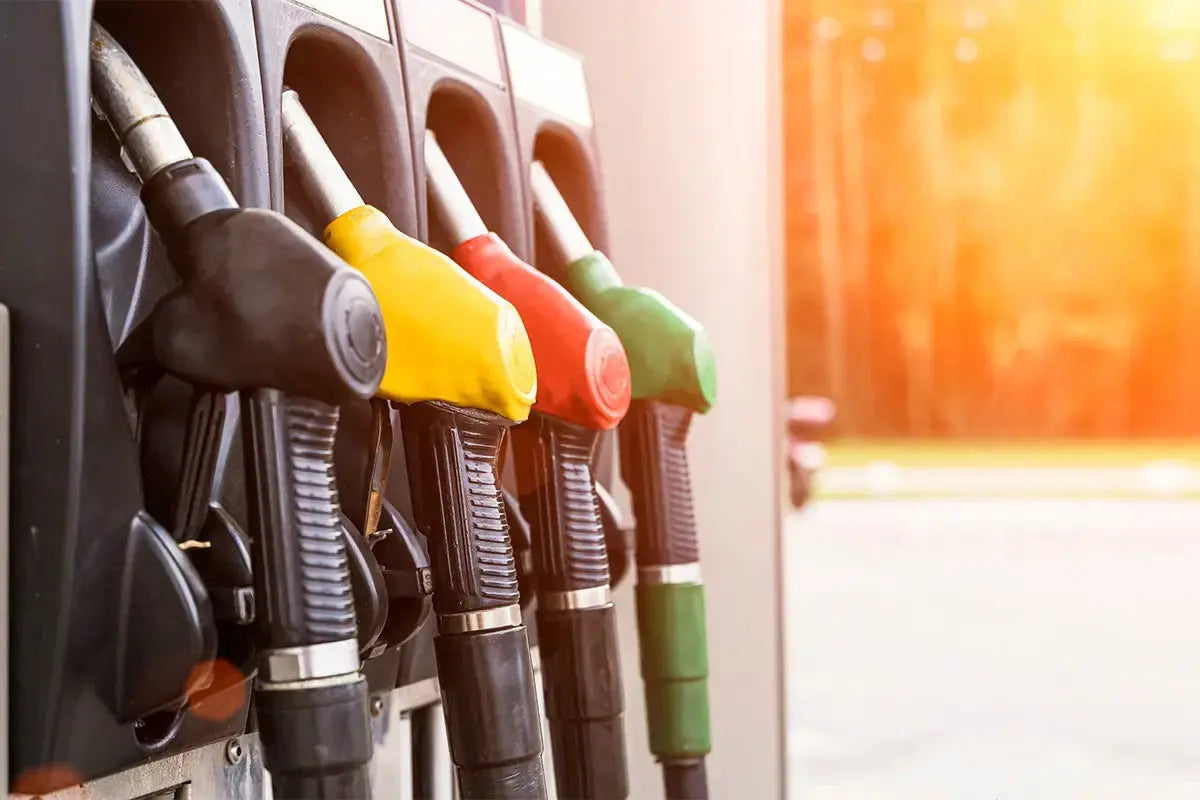
Taking care of your tires and making sure that they’re properly inflated, installed, and balancing is critical to the safety of your vehicle and yourself.
Maintaining the balance of your tires isn’t all too complicated and can extend their lifespan and performance. You might be surprised at how easily they can be thrown off, which makes it important to check their balance regularly and know how to rebalance them.
Coming to a sudden, harsh stop, hitting a noticeable pothole, or natural wear over time can all lead to your tires spinning out of balance.
At Shine Armor, we care deeply about the safety, performance, and presentation of your vehicle, and we know you take pride in your car on the inside and out.
Here’s how to check if your tires are out of balance and what to do if they are. Read on to learn more in this article of shine armor blog!
Related products in shine armor:
- Graphene Ceramic Spray
- Fortify Quick Coat
- Revive Car Scratch Remover
- Graphene Ceramic Nano Glass Coating
- Anti-Fog Hero
- Car Upholstery and Interior Cleaner
The Importance of Tire Balancing
Tire balancing might be easily overlooked, but it plays a critical role in the overall performance and safety of your vehicle. Imagine driving at high speeds with imbalanced tires - the experience would be far from smooth. Tire balancing ensures that the weight of the tire and wheel assembly is distributed evenly, preventing vibrations and providing a comfortable ride.
Signs of Tire Imbalance
Detecting imbalanced tires is crucial to timely maintenance. If you experience vibrations or shaking, especially at higher speeds, it's a clear indication of imbalanced tires. Uneven tread wear can also point to imbalance, as can a persistent pull in the steering. Suspension problems might emerge as a result of prolonged driving with imbalanced tires.
Understanding Tire Balancing
Tire balancing can be static or dynamic. Static balancing addresses the vertical imbalances, while dynamic balancing tackles both vertical and lateral imbalances. The process involves adding balance weights to counteract the uneven weight distribution.
When Should You Balance Your Tires?
There are several ways to tell if your tires need maintenance. Whether it’s rebalancing, rotation or replacement, they’ll let you know if something is wrong.
New Tires
Anytime you buy yourself a new set of tires, you want to make sure that they’re installed correctly, which includes checking and balancing them.
You could do this yourself if you personally installed your new tires, but more often, this service is included when you have professionals do it at the shop.
You also want to make sure that they hold on to that new tire shine as long as they can, which is extremely easy with our Graphene Tire Shine. Even if you’ve got a few years on them, we can help get them looking back to new.
Vibrations or Noises
Unbalanced tires have a few ways of letting you know they’re not properly in place, and one of the most easily noticeable is a loud vibration sound. Not only will you hear it, but you’ll more than likely feel it as well.
While vibrations can mean a couple of things when it comes to your tires, it never means anything good. If you’re hearing something coming from one of your tires, it could mean you have uneven tread wear or an imbalance problem.
Typically vibrations from imbalanced tires will be more noticeable at speeds above 45 miles per hour. It’s important to monitor your tire health regularly. Every few weeks, take a moment to turn down the music and listen for anything out of the ordinary while driving.
Lights in the Dash
Similar to the noise and vibrations, lights in the dash can mean any number of problems with your entire vehicle, not just your tires.
Regarding your tires, there are two lights you want to keep an eye out for are the anti-lock braking system light and the low-pressure light. There isn’t one specifically for imbalanced tires, but these two will be enough to let you know something is wrong.
The anti-lock braking system light is easy to identify since it’s just the letters “ABS,” and the low-pressure light looks like an exclamation mark inside of a little cup.
If you have a car older than 2012 and you live in the United States, your car might not have an ABS light as they weren’t mandatory yet, so you’ll just be looking for the low-pressure light.
Uneven Tread Wear
There are a few different types of uneven tread wear to be aware of, but we’re looking for patch-wear specifically for imbalanced tires.
Patch-wear is random and patchy (hence the name), so when you’re checking your tire tread, make sure to go around the whole tire.
Using a quarter, stick George Washington's head in between the treads. If you can still see the top of his head sticking out, that means that there’s less than 2/16th of an inch, and your tires have been worn down to the point when you should consider a new set.
How Often Should You Balance Your Tires?
Letting your tires go without being balanced for too long can have dangerous and lasting consequences. Particularly the amount of uneven wear on our tread.
Your tires will wear down over time naturally, but if they develop patchy and erratic spots in the tread, they decrease your vehicle's performance, the traction power that they can have and lead to potential blowouts at high speeds. We’re sure we don’t have to tell you how unpleasant that would be.
It’s recommended that you test your tire tread regularly, at least once every month or so. Then, rebalance your tires every ten to twelve thousand miles and get them rotated every other time.
Shop by category:
How To Balance Your Tires
There are three ways to go about balancing tires, but only one of them you’ll be able to do from home- Unless you have professional auto-mechanic machinery.
We won’t spend too much time going over the techniques to balance tires that are mostly exclusive to the shop, but if you’re excited about learning something new, we’ll cover them briefly.
Generally speaking, balancing tires requires spinning or balancing the tires to determine if and where they aren’t balanced and then placing weights along the rim to adjust.
Road Force Balancing
Road force balancing is the future of tire balancing processes. It uses a high-tech machine that looks like a large rolling pin, which presses against your tire as it spins.
The machine presses against the tire and detects even the smallest off-balance spots. It can determine the difference between healthy and unhealthy tread wear.
It’s certainly the most accurate option, though not quite accessible from home.
Dynamic Balancing
Another mechanic-only tactic for balancing is dynamic balancing. Dynamic balancing involves a machine that spins the tire at high speeds and feels where it's unbalanced and by how much, similar to the road force balancing.
This technique isn’t as accurate as using the road force balancing, but it’s very easy for a mechanic to adjust the weights on your wheel fairly simply and quickly.
Static Balancing
The process used at home is an older method, but it still works well.
Static balancing uses an unmoving balancing post or spindle that the tire is placed on wheel-face up. In the center of the post is a small bubble and circle balance, the goal being to line up the bubble into the circle.
If the wheel is unbalanced, then the bubble will clearly reflect that, and the user can adjust as necessary by attaching weights to the rim to counterbalance the offset.
The process, from start to finish, goes as follows:
- Take your wheels off your vehicle.
- Take off any weights that are currently on your wheel, so you’re starting with a blank slate.
- Clean your wheels and tire to ensure that there isn’t any dirt or debris messing with the calibrations. Our Pristine Tire Shine Gel is a water-based compound with zero sling and is easy to apply to any tire if you’re looking for cleaner options.
- Follow the instructions that come with your balancing post to set it up. You’ll need a solid floor to work on. The floor may not be level, but that’s alright as there will be small screws to calibrate the post. You want the bubble perfectly in the center of the circle before you put the tire on.
- Place the tire onto the balancing post and wait for it to settle. Then, determine if the bubble is off-center, in what direction, and by how much.
- Place weights onto the wheel around the lip flange, on the side, the bubble is closest to. Finesse the weights until the bubble is as perfectly center as you can manage.
- Using chalk or a washable marker, make marks of where your weights are to help ease the process of attaching them.
- Proceed to attach your weights following the instructions they came with. Some may require hammering onto the wheel lip, and others may be adhesive. Ensure that they are properly attached and will not come flying off at high speeds.
Benefits of Proper Tire Balancing
Properly balanced tires translate into a smoother, more comfortable ride. They also contribute to fuel efficiency and extend the lifespan of your tires. Furthermore, balanced tires reduce wear and tear on your vehicle's suspension components.
Maintaining Balanced Tires
Regular inspections, tire rotations, and keeping an eye on tire pressure are key to maintaining balanced tires. Routine maintenance ensures that imbalances don't go unnoticed, preventing potential problems down the road.
In Conclusion
Getting your tires rebalanced might cost between $50 and $100, but why not learn how to do it yourself? Using a static balancer, the process is certainly not that complicated, and you can get similarly accurate results as the fancy machines. However, if you have a hard time, you should take your wheels to the mechanic.
Unbalanced tires can result in uneven tread-wear, suspension damage, and blowouts, so it’s definitely a problem that you want to be solved sooner or later. Otherwise, you might be picking out a new set of tires altogether, if not worse.
Related blog posts:





